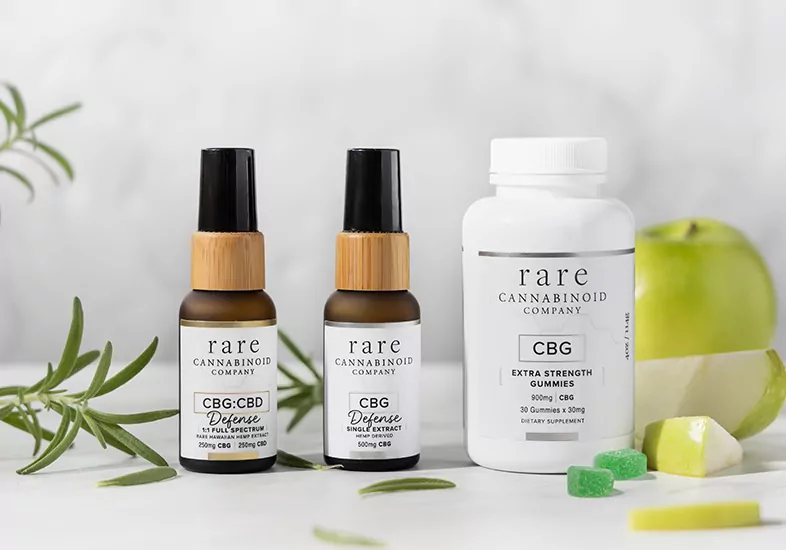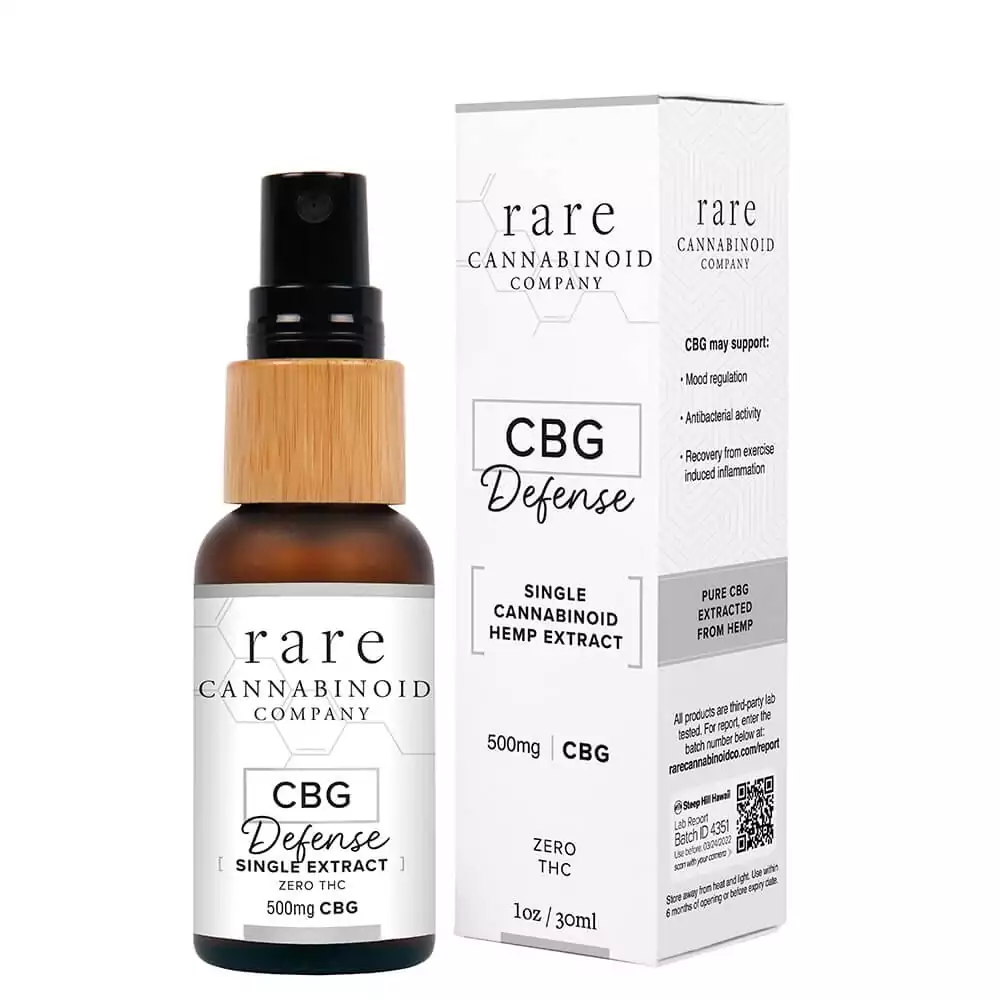What is CBG? Is CBG better than CBD for discomfort?
Oct 16th 2020
What is CBG and is CBG better than CBD or THC for discomfort? Some studies say yes. Read on to learn all about CBG effects and CBG benefits. If you’d like to try it for yourself, Rare Cannabinoid Company offers premium, purified CBG oil tinctures tasty, vegan CBG gummies, and THC + CBG gummies.
CBG for calm and discomfort
 CBG (cannabigerol) is the best cannabinoid for relieving soreness after exercise. Rare Cannabinoid Company offers the highest-quality CBG oil and CBG + CBD blends as well as strong, vegan CBG gummies. Buy CBG oils and gummies here.
CBG (cannabigerol) is the best cannabinoid for relieving soreness after exercise. Rare Cannabinoid Company offers the highest-quality CBG oil and CBG + CBD blends as well as strong, vegan CBG gummies. Buy CBG oils and gummies here.Many people are turning to CBD and cannabis for help with physical and mental wellness, but there’s another cannabinoid that may be even more beneficial for many ailments. That rare cannabinoid is CBG (cannabigerol).
CBG relieves stress and discomfort and is being studied for use for many issues.
As a company selling CBG, CBD, THC and rare cannabinoids, we have to be very careful that we do not list anything that could go against FDA rules. For scientific studies on CBG and ailments, please see this Leafly article on CBG for discomfort.
What is CBG?
CBG is a rare cannabinoid which means that it naturally occurs in very small quantities (usually less than 1%) in hemp and cannabis plants. Interestingly, it’s often called the “mother of all cannabinoids” because CBGA, the acidic precursor to CBG, starts off in greater abundance but then transforms into the better-known, more prevalent cannabinoids: CBD and THC.
All of these cannabinoids work with the human endocannabinoid system (ECS), which is a complex signaling system that regulates bodily functions. Each cannabinoid has a unique effect on our ECS.
So, how is CBG isolated and offered in greater quantities now? Breeders have worked with hemp plant genetics to get them to produce more CBG and extractors have found the optimal time to extract CBG before it turns into CBD or THC. This combination of advances has resulted in pure CBG for sale and also CBG and CBD blends and CBG gummies.
How to take CBG
If you are interested in adding CBG to your wellness routine, there are a few ways that you can try it.
Most cannabis flowers and full spectrum CBD or THC oils will contain trace amounts of CBG. However, these are usually very small amounts that will boost the efficacy of your CBD or THC, but not show the full benefit of the specific cannabinoid.
Some cannabis flowers have been bred to contain a higher ratio of CBG to THC, but THC is psychoactive and this method involves smoking.
Therefore, the easiest way to take CBG and know the exact amount you are taking is to use a CBG oil tincture or measured blend of CBG with CBD.
CBG for sale online

Rare Cannabinoid Company offers a 500mg CBG oil tincture. This single extract is naturally flavorless and contains just purified CBG and certified organic MCT coconut oil. You shake the bottle and spray it one to two times under your tongue, hold for 30 seconds, then swallow. This sublingual method absorbs quickly into your body. While this single extract of CBG can be taken on its own, it is recommended that you mix and match it with Rare Cannabinoid Company’s Hawaiian CBD oil or another full spectrum or broad spectrum oil to receive the benefits of the entourage effect. Otherwise, it can be used in combination with other single extracts of THCV, CBN or CBC.

For a ready blended mix, Rare Cannabinoid Company also sells a tincture containing 250mg CBG with 250mg full spectrum Hawaiian CBD. The cannabinoids are mixed with certified organic MCT coconut oil and gently flavored with certified organic food grade Italian lemon and wild orange oils. This blend offers the targeted benefits of CBG along with those of CBD and will promote the entourage effect. It’s a complete daily hemp supplement.
CBG Gummies
You can also take CBG gummies – each one contains 30mg CBG and 10mg CBD. We also offer THC + CBG Gummies which add 2.5mg hemp-derived Delta-9-THC to the mix. All Rare Cannabinoid Company gummies are made with natural ingredients and are vegan. CBG gummies and THC + CBG Gummies are green apple flavored.
If you’re interested in other rare cannabinoids, you can read more about CBN for sleep and THCV for energy and appetite control. CBC also shows great promise for mood regulation, clear skin and other health and wellness benefits.
1 Comments
Leave a Comment
You must be logged in to post a comment.




[…] CBG (cannabigerol) is real health and wellness cannabinoid, with scientific studies saying it appears to work well for inflammation, fight bacteria, act as a neuroprotectant (aiding those with Parkinson’s, Alzheimer’s and other dementias as well as MS), and is being researched in the fight against cancer. You can find links to studies in this blog: What is CBG and what benefits does CBG offer? […]